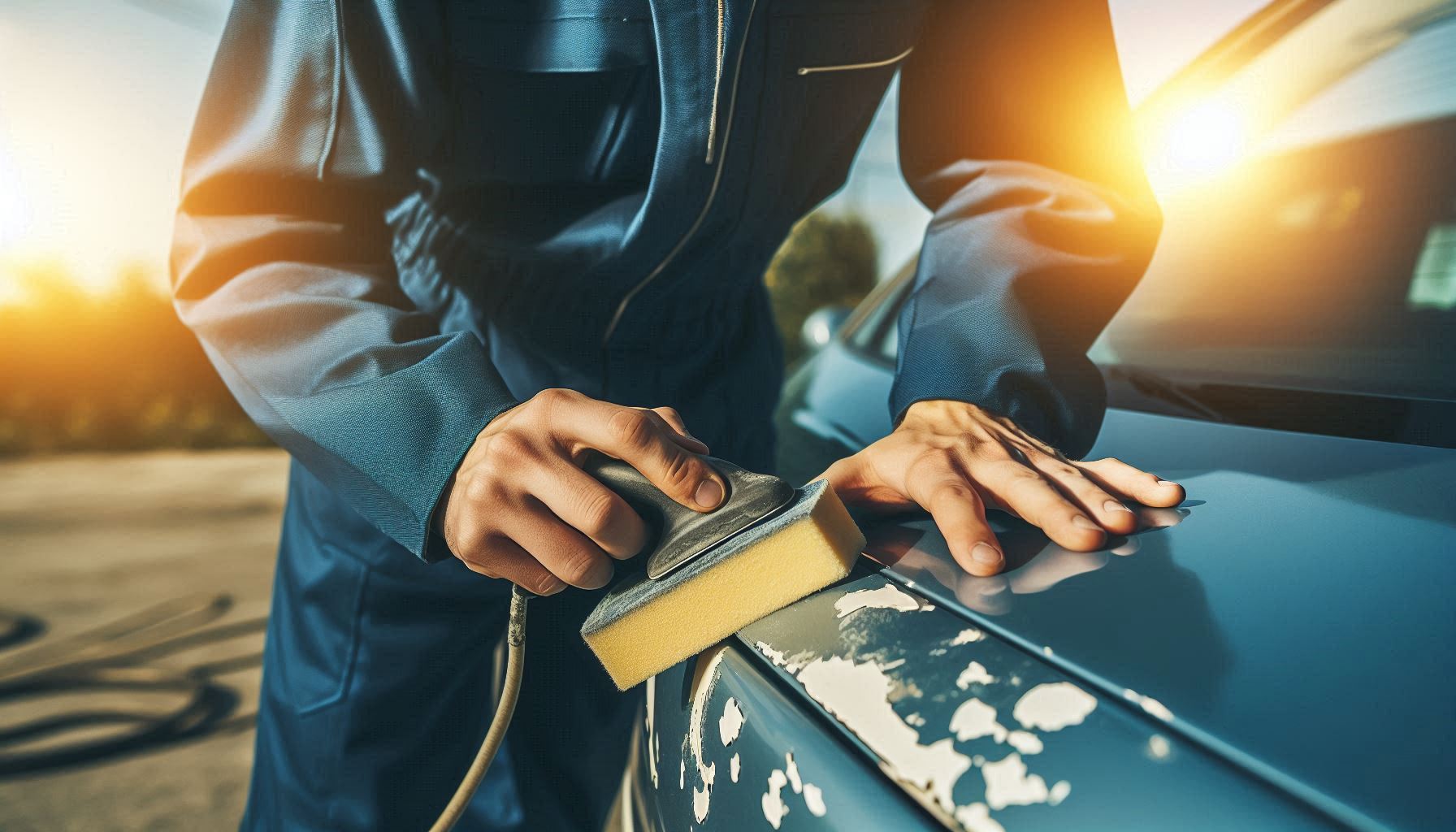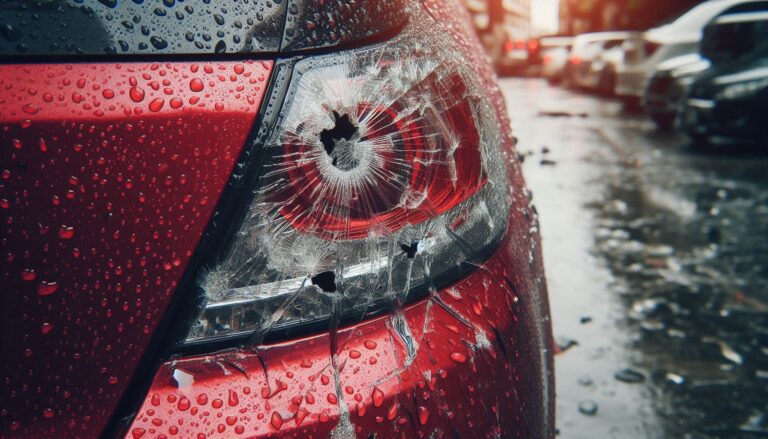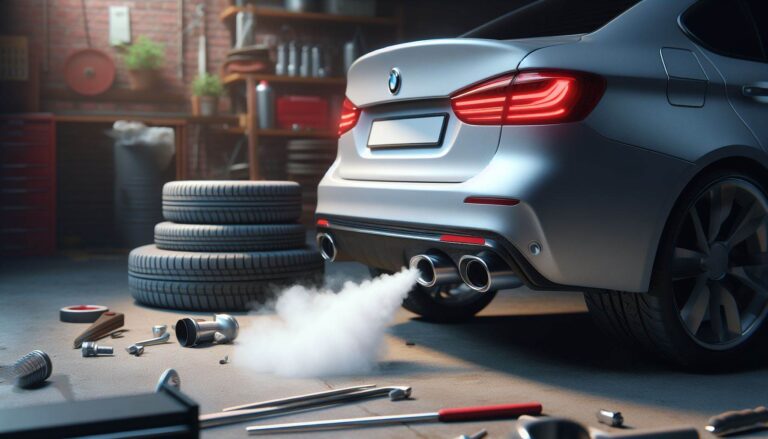How to Fix Peeling Car Paint: A Step by Step Guide

Peeling car paint is a common issue that makes your vehicle look old and neglected. If left untreated, it can expose the underlying surface, eventually leading to rust or further deterioration. Fortunately, learning how to fix peeling car paint is straightforward as long as you have the right tools and materials. In this guide, we’ll walk you through the steps to restore your car’s finish and keep it looking brand-new.
What Causes Car Paint to Peel?
Understanding the causes of peeling paint is essential for preventing future damage and saving on repair costs. Generally speaking, these are the most common culprits:
- Sun damage: Prolonged exposure to ultraviolet (UV) rays weakens the paint, causing it to separate from the surface.
- Improper paint application: If the original paint or clear coat wasn’t applied correctly, it will likely peel prematurely.
- Physical damage: Scratches, dents, or chips allow moisture and dirt to creep beneath the paint, leading to peeling.
- Poor maintenance: Skipping regular waxing or washing speeds up paint degradation over time.
Tools and Materials Needed to Fix Peeling Car Paint
Before you begin, ensure you have the following tools and materials ready:
- Sandpaper (600, 1000, and 2000 grit)
- Automotive primer
- OEM-matching touch-up paint
- Clear coat spray
- Microfiber cloths
- Masking tape
- Rubbing compound
- Polishing pads
Step-by-Step Guide on How to Fix Peeling Car Paint
1. Prepare the Area by Washing the Car
To begin, wash the affected area thoroughly to remove dirt, grease, and other contaminants. Use a mild detergent, and rinse with water to ensure a clean surface. After that, dry the area with a microfiber cloth to avoid introducing any new scratches.
2. Sand the Peeling Paint Area
Next, gently sand the peeling paint with 600-grit sandpaper. This helps smooth the edges and remove any loose flakes. Then, use 1000-grit sandpaper to further refine the surface. If necessary, finish with 2000-grit sandpaper for a polished base.
3. Apply Primer to the Exposed Surface
Once you’ve sanded the area, apply automotive primer to the bare metal or plastic. This step ensures the new paint adheres properly. Be sure to allow the primer to dry for at least 30 minutes or follow the drying time on the product label.
4. Paint the Affected Area with Matching Touch-Up Paint
Now, use OEM-matching touch-up paint to cover the sanded section. Hold the spray can 6–8 inches from the surface, and apply thin, even coats. Let each coat dry for 10–15 minutes before adding another. In most cases, 2–3 coats will provide full coverage.
5. Seal the Paint with Clear Coat
After painting, apply a clear coat spray over the repaired area. Use 2–3 light layers to build up a durable finish. Additionally, the clear coat restores shine and shields the surface from UV rays and moisture. Be sure the final layer cures fully before continuing.
6. Polish and Buff the Repaired Area
Finally, use a rubbing compound with a polishing pad to blend the repaired section into the existing paint. Gently buff the area in circular motions until the surface is smooth and glossy.
How to Prevent Peeling Car Paint in the Future
Now that you know how to fix peeling car paint, it’s equally important to prevent future damage. Here are a few maintenance tips to keep your car’s paint looking great:
- Park in the shade: Whenever possible, reduce sun exposure to prevent UV damage.
- Wash and wax regularly: This helps protect the clear coat and keeps contaminants from penetrating the paint.
- Fix chips and scratches promptly: Small damages left untreated can allow moisture in, leading to peeling.
- Use a car cover: If your car is parked outside for long periods, a cover will shield it from the elements.

Frequently Asked Questions about Fixing Peeling Car Paint
Q: Can I repair peeling paint myself, or should I visit a body shop?
A: If the affected area is small, you can follow the steps in this guide and fix it yourself. However, for larger areas or more extensive damage, professional help might be needed.
Q: How much does it cost to fix peeling car paint?
A: DIY repairs typically cost between $50 and $100. On the other hand, professional services can range from $500 to $2,000, depending on the extent of the damage.
Q: How long does it take to fix peeling paint?
A: A small repair can be completed in 2–3 hours. However, allow extra time for the paint and clear coat to dry properly between layers.
Conclusion
Knowing how to fix peeling car paint can save you money and help your vehicle maintain its appeal. With the right materials and some patience, you can repair peeling paint on your own and avoid expensive repaint jobs. Remember, early intervention and proper maintenance are key to preventing future paint problems. By following the tips in this guide, you’ll ensure that your car’s paint stays in great condition for years to come!






